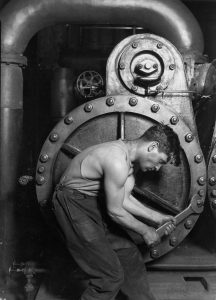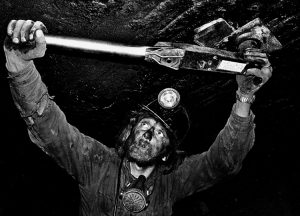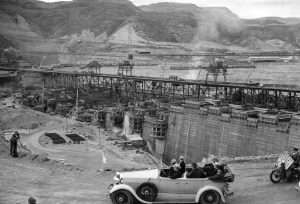
Fake News: Former Bush Administration OSHA head Ed Foulke has boldly predicted in a National Law Journal interview that Trump’s OSHA will focus more on compliance assistance than enforcement. That’s about as insightful as saying that a Republican administration will focus more on tax cuts. But what’s infuriating is his continuation of the myth that the Obama administration was all enforcement and no compliance assistance: “During the Obama years, they believed enforcement was important and that’s where they come from….But even in the Clinton administration, compliance and enforcement assistance were considered important ways to prevent fatalities and injuries. This was not case in Obama years. It was almost purely an enforcement agency.”
Wrong, wrong, wrong: I wrote extensively about this myth here, but here are just a two data points to try kill this zombie argument once and for all:
OSHA’s 2008 Compliance Assistance Budget $136,132,000.
OSHA’s 2016 Compliance Assistance Budget: $136,745,000.
Everyone clear now? Is this the last tie we’ll hear this myth? Good. Now back to our regularly scheduled program…..
And Speaking of Compliance Assistance: Compliance assistance, working cooperatively with businesses is important and has its place. But what do you do with companies that have been cited before after amputations, who have been warned by a near death of an employee who was being pulled into a machine, and where a worker was later killed in that same machine? More compliance assistance? This is the story of Autoneum, an Indiana auto-parts facility where Melissa Stephens was dragged into a machine and crushed to death last October. Another workers, Kasi Ballew, had been dragged into the same machine a few months before, but luckily “a co-worker pressing several of the emergency stop buttons — scrambling to find one that worked. ‘Had my back up not found one that worked, it would have completely crushed my skull,’ she said. She was later told three of the four emergency stops weren’t even wired in.” What’s the solution here? More compliance assistance or stronger enforcement?
Dirty and Dangerous: Waste collection work is one of the most dangerous jobs in the U.S. according to a report, Dirty and Dangerous Worker Safety and Health in New York City’s Scofflaw Commercial Waste Industry, by the New York Committee on Occupational Safety and Health (NYCOSH). “Waste workers are ten times more likely to be killed on the job than the average worker and two and a half times more likely to be injured than miners. Nationally, occupational fatalities in private sector solid waste collection are consistently higher than those in local government sanitation agencies; 85% of fatalities in the industry occur in the private sector.” In addition to the safety and health hazards, employers also” violate wage and hour legal requirements, engaging in various forms of wage theft by not providing payment or overtime for all hours worked, by paying individual workers varying rates of pay, and by pressuring employees to work through unpaid meal breaks.” The report contains a list of recommendations and recommended best practices.
The report is dedicated to the Memphis sanitation workers where the deaths of two workers sparked the 1969 strike that ended with the assassination of Dr. Martin Luther Kinb.
Distracted Cops? My sister is a cop. I rode around with her once and was struck by her ability to multi-task: Looking for speeders, red light runners and DUI’s, looking up license plates on her in-car computer, listening to dispatch, talking to headquarters or other officers on her phone, and, uh, driving. Are cops super-human, or are they mere mortals like the rest of us distracted drivers? “According to the National Law Enforcement Officers Memorial Fund’s annual report, 14 officers were killed in single-vehicle crashes in 2017, up from 11 in 2016. Single-vehicle crashes accounted for 42 percent of all deadly accidents, which otherwise were down from the previous year.” Fatigue is bad for drivers. Distraction is worse. Both can be deadly. One solution is to go back to two officer cars — one to drive, and the other to do business. But that, of course, is expensive.

Promises Not Kept: A Charleston Gazette editorial reminds us that Black Lung, a disease many think was vanquished in a bygone age, is still with us — or more specifically still with coal miners who continue to suffer an die from a preventable disease.
In 2016, the U.S. Centers for Disease Control and Prevention reported on a single radiologist in Eastern Kentucky who found 60 cases of the most severe form of the disease. The official count from the National Institute for Occupational Safety and Health was just 99 cases for the whole country at the time.
Since then, NPR’s Howard Berkes has been surveying clinics, trying to get a complete count of black lung in Appalachia. As of last summer, NPR found nearly 2,000 cases of progressive massive fibrosis, the most severe form of miners’ pneumoconiosis.
The Gazette reminds us that “Federal law in 1969 and following years gave the U.S. Mine Safety and Health Administration tools to fight it — the power of mine inspections and the ability to set dust limits through rules, for example. The promise of that 1969 law has not been kept.”
Meanwhile, the Trump administration is repealing regulations and slowing enforcement in an effort to end the mythical “war against coal.” Unfortunately, the “war against coal” has been replaced by a “war against coal miners.”

Remembering Those Who Built America: Building this country did not come cheap. Between the 1930s and the 1980s, at least 82 workers died at the Grand Coulee Dam site. Visiting the dam, you’d never know that. There is no marker, no memorial. But now, thanks to the efforts of Jacob Miller, who works at the Grand Coulee Visitor Center, and Susan Dechant, a researcher for the Northeast Washington Genealogical Society, these men and their stories are coming to light. ”
The workers who died ranged in age from young to old, Miller said, and in a variety of ways. “The biggest one is falls,” Miller said. “Electrocutions, crushes, things falling on people – one was a 200-pound anvil. Drownings. Vehicle accidents. There were a couple of heart attacks. The first death was in 1934, caused by a heat stroke, someone laying up on a pole on a hot, summer day.”
Information is being posted on a Facebook page and they hope, someday, to see a display at the visitor center or maybe a monument in the area. Sounds like the least they can do. Interestingly, there apparently used to be a monument, “It was 10 feet of Georgia granite, with room for 75 names, and commissioned by the local American Legion,” but it was removed after two years, leaving only the concrete pedestal.
Stab Me Once, Shame on Me: Shoplifting is nothing new. What measures can companies employ to stop shoplifting? Cameras, security guards, electronic theft detectors are all commonly used. What should not be done is to require regular store employees to put their lives at risk to stop shoplifters. In St. Louis, two Family Dollar discount store employees were stabbed last year attempting to stop shoplifters. What are the company’s policies? Do they require employees to try to physically stop shoplifters? Do they tell employee that they are not, under any circumstances supposed to try to physically restrain shoplifters? OSHA might want to look into it.
Once again, a terrific line-up of articles. I use these all the time, so keep them coming. Very helpful on the Compliance versus Consultation data. On the matter of staffing police vehicles. I worked for 13 in the fire service and EMS as a paramedic, firefighter and EMT, and the battle for staffing always came down to safety. When you don’t have enough people working a structure fire, for example, people get hurt because they’re trying to do too many things, too quickly. It’s the same for medical emergencies. One of my co-workers fell through a roof because he arrived too late up on the roof to open ventilation holes–because he was doing other stuff: securing utilities, deploying the aerial ladder to access upper story windows. He survived because he landed on unburned rafters under his armpits–and one other firefighter was strong enough to pull him out. I was often struck how the police patrolled in our area of the city, which was the most violent, on their own, without anyone else in the car, where we showed up with three people. At night the police would often double-up, but honestly, it wasn’t much safer at night for them. With all of the communications demands, driving and logistics required of an officer, it seems dangerous to be doing it while also trying to drive.